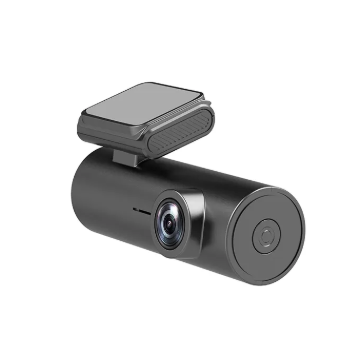Understanding 4G Network Technology in Trail Cameras
How 4G Replaces WiFi for Data Transmission
4G network technology stands out in trail cameras by replacing the need for WiFi during data transmission. Unlike WiFi, which requires a nearby router, 4G utilizes cellular signals, marking an advancement in real-time communication without depending on limited WiFi systems. This technology is particularly advantageous for trail cameras, enabling them to send images and Videos directly to users' mobile devices or cloud storage. Such an approach enhances accessibility and management, proving essential for outdoor monitoring. Furthermore, studies highlight that 4G networks provide broader coverage and superior penetration across environments, hence supporting reliable performance in remote areas.
Cellular vs. WiFi: Key Differences
The primary difference between cellular and WiFi connections for trail cameras lies in coverage. Cellular networks offer expansive reach compared to the limited range of WiFi. Using 4G technology, these cameras benefit from faster data speeds, significantly boosting the transmission of high-definition images and videos. Moreover, cellular connections provide better security for remote monitoring, minimizing the risk of unauthorized access typically associated with open WiFi networks. While WiFi can be disrupted by physical barriers and interference, cellular signals maintain consistency, making them especially suited for outdoor applications. This reliability ensures continuous operation regardless of environmental challenges, offering a dependable solution for those relying on trail cameras.
Core Components Enabling 4G Connectivity
SIM Cards and Carrier Compatibility
A SIM card is a key component for enabling connectivity in 4G trail cameras. It acts as a unique identifier on the cellular network, facilitating secure data exchange. To maximize efficiency, users must choose cameras compatible with their preferred cellular providers, ensuring seamless operations. Some trail cameras come with pre-installed SIM cards, simplifying the setup for non-technical users. Research highlights that selecting a reputable carrier can enhance the performance and minimize downtime, making it essential to consider both the geographic coverage and service quality when choosing a carrier. Understanding carrier compatibility ensures your trail camera remains operational in remote areas where signal strengths may vary.
Data Plans: Prepaid vs. Subscription Models
Choosing between prepaid and subscription data plans for 4G trail cameras hinges on usage patterns. Prepaid plans offer flexibility and are ideal for those cautious about monthly data commitments, providing control without long-term contracts. Conversely, subscription models excel for users who frequently need data, offering unlimited benefits for constant monitoring. Comparing data costs among providers is crucial, especially for cameras placed in remote locales, to find an economical option that suits specific usage needs. Furthermore, some data plans include rollover features, advantageous for irregular usage, allowing users to optimize their investment in trail cameras without any wastage of unused data.
Signal Requirements and Optimization
Cellular Coverage Essentials
Understanding cellular coverage in the area is vital for optimizing the performance of 4G trail cameras. A strong signal significantly boosts camera performance and quickens data transmission, ensuring you're always updated with the latest observations. To achieve optimal function in your monitoring zones, consult coverage maps from various carriers to determine if your selected camera will perform as expected. Additionally, obstacles like dense forests or large structures can degrade signal strength. For better reliability, place your camera with a clear line-of-sight to nearby cell towers. Conducting signal strength tests prior to installation can preempt connectivity issues down the line.
Signal Boosters and External Antennas
Signal boosters can greatly improve the functionality of 4G trail cameras in areas with poor reception. By attaching external antennas to these cameras, users can extend reception range, allowing placements in previously unreachable regions. Investing in quality signal-boosting equipment not only reduces latency in data transmission but also enhances overall camera operations. Consulting with experts on the ideal setup for specific environments can maximize the benefits derived from signal boosters and external antennas, ensuring your equipment functions optimally no matter where it's stationed.
Power Management Without WiFi Dependency
Battery Types and Longevity Strategies
Understanding the battery types for 4G trail cameras is essential for efficient power management. Most 4G trail cameras rely on lithium-ion batteries, which offer longer life and better performance than traditional alkaline batteries. Here are some strategies to extend battery life:
- Low-Power Modes: Utilize low-power modes to reduce battery consumption during periods of inactivity.
- Data Transmission Settings: Set your camera to transmit data only when necessary, minimizing power usage significantly.
- Maintenance Routines: Regularly check battery connections and proactively replace batteries to prevent operational failures.
- High-Capacity Options: Manufacturers often recommend high-capacity or rechargeable batteries for a more sustainable approach.
These steps not only enhance camera performance but also provide a reliable solution for continuous monitoring in remote areas.
Solar Panels for Remote Operation
Solar panels are an invaluable power solution for 4G trail cameras, particularly in remote locations. They provide a sustainable energy source, reducing dependency on frequent battery replacements. Notable advancements in solar technology have made smaller panels more effective, supporting continuous camera operation. Here are key aspects to consider:
- Installation & Positioning: Proper installation is critical—ensure solar panels are positioned to capture maximum sunlight for optimal battery maintenance.
- Operational Consistency: Combining solar power with battery backup significantly extends operational time between maintenance checks.
- User Insights: Studies indicate that this combination improves reliability, especially in areas lacking traditional power sources.
Integrating solar panels with trail cameras ensures seamless monitoring, enabling users to focus on data without worrying about power interruptions.
Advantages of 4G Trail Cameras Over WiFi Models
Real-Time Alerts in Remote Locations
One of the standout features of 4G trail cameras is their ability to deliver real-time alerts directly to users' smartphones. This capability is invaluable for hunters, wildlife researchers, and security personnel, allowing instantaneous responses to any activity captured by the camera. The immediacy of these alerts enhances decision-making processes, whether for monitoring wildlife activity or ensuring site security. According to studies, users of 4G cameras consistently report higher satisfaction due to the ease of monitoring remote locations without the need for frequent on-site visits. This convenience not only streamlines operations but also contributes significantly to effective wildlife management and conservation strategies.
No Proximity Limitations to WiFi Networks
Another significant advantage of 4G trail cameras is their independence from WiFi proximity limitations. Users can operate these cameras in remote or isolated areas where WiFi signals are unreliable or non-existent, a critical feature for outdoor enthusiasts and professionals working in environmental and wildlife conservation. The extensive coverage provided by 4G networks means that information can be accessed from virtually any location, vastly improving monitoring capabilities. This flexibility enhances user experience by allowing seamless remote access to live-streamed data, eliminating the constraints associated with traditional WiFi-connected devices. Such independence is vital for those who require reliable surveillance and monitoring, regardless of geographical challenges.
FAQ
What makes 4G trail cameras superior to WiFi trail cameras?
4G trail cameras offer wider coverage and faster data speeds, allowing real-time alerts and monitoring without being restricted by WiFi range limitations.
How do SIM cards enhance 4G trail camera performance?
SIM cards are crucial for 4G trail cameras as they facilitate secure connections to cellular networks, which improves data transmission and accessibility.
Are solar panels effective for 4G trail camera power management?
Yes, solar panels provide a sustainable power source, reducing the need for frequent battery replacements and enhancing camera operation in remote areas.



